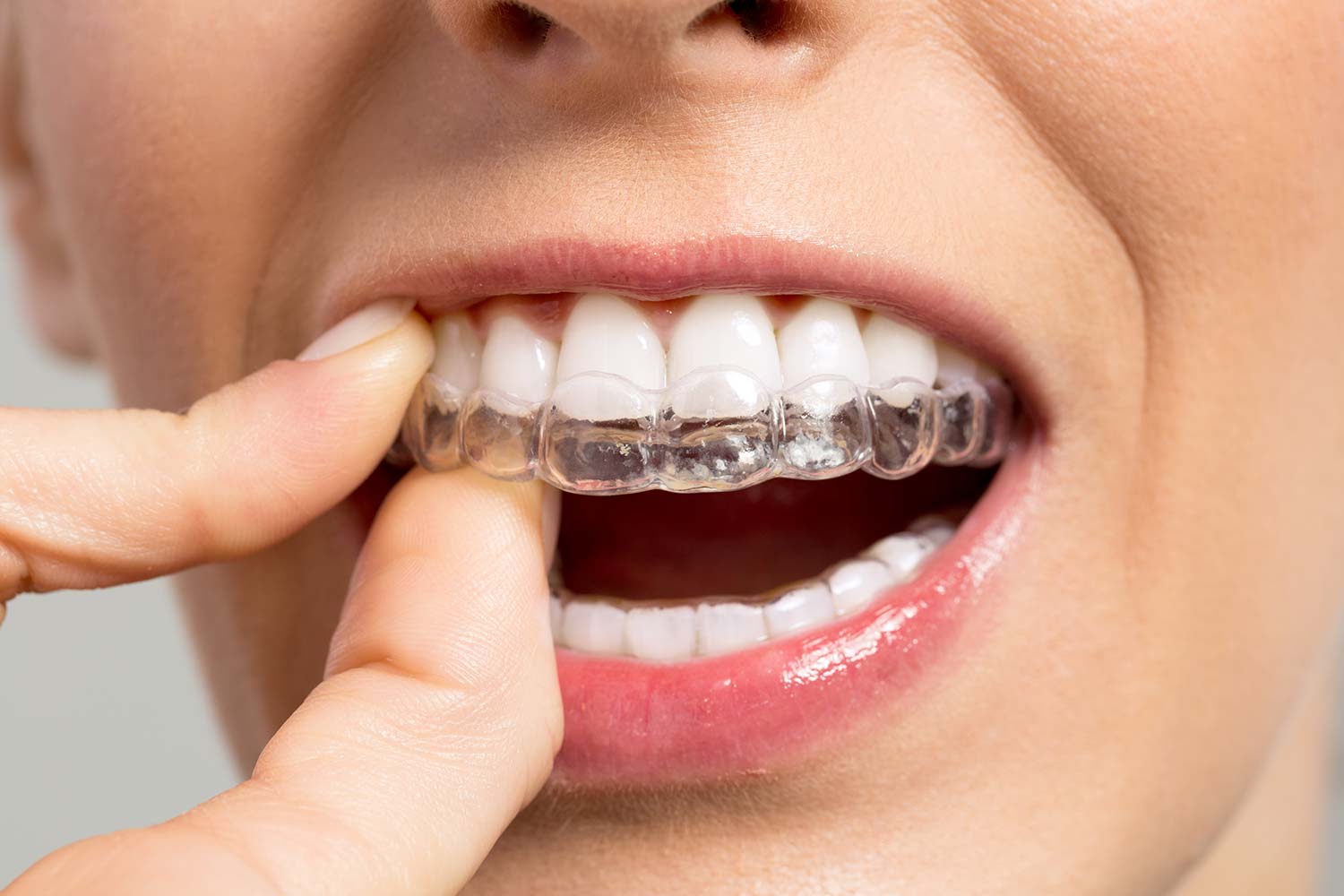Finding out that you need braces likely isn’t at the top of anyone’s wish list. Despite the health and cosmetic benefits of braces, they tend to get a bad reputation. When you think about braces, you probably think of the classic metal design. But did you know there are several types of braces available to choose from, each with their own unique benefits?
Picking the type of braces you or your child will wear depends on many factors. Depending on the type and severity of the orthodontic issue being treated, these alternatives may not always be available. It’s important speak with your orthodontist about your options and what might work best for you, especially if you have questions regarding adult braces. Before you schedule your appointment, learn about the different types of braces and how they work.
Clear Braces / Aligners
Clear aligners like Invisalign® are a very popular option, particularly for adults. As the name suggests, these aligners are custom-made with a clear plastic, which leaves them essentially invisible when worn. This makes them an ideal choice for patients who find traditional metal braces aesthetically displeasing.
Invisalign works by having the patient progress through multiple trays that are custom designed specifically for their unique alignment issues. Each tray gently shifts teeth into the desired position, and then the patient continues with the next tray. Patients wear their trays for around 22-24 hours per day, with treatment plans lasting around 6 to 18 months on average. Clear aligners come with a host of benefits, though they do have some drawbacks:
Pros of Invisalign®:
- Clear/Invisible Trays
- Can be removed easily
- No dietary restrictions/issues during use
- More comfortable in majority of cases
- Easier oral care routine versus metal braces
Cons of Invisalign®:
- Must be removed to eat/drink (except for water)
- Not viable for severe orthodontic issues
- Not available for children
- More expensive than metal braces
One thing to note is that sometimes additional attachments are needed to complete treatment with Invisalign®. These attachments are not always invisible and can possibly cause irritation. Your orthodontist will be able to help decide if Invisalign is a good corrective option for you, and whether you may need attachments to complete the process.
Ceramic Braces
First used in the 1980s, ceramic braces are another option commonly preferred by individuals looking for more visually pleasing braces. While similar to metal braces, ceramic braces replace the traditionally metal brackets for ceramic ones which are clear or designed to closely match the color of your teeth. Ceramic braces still use a wire that is noticeable, but the overall appearance makes them difficult to notice except at close distances.
If you think ceramic braces may be right for you, considering these pros and cons:
Pros of Ceramic Braces
- Clear or tooth-colored options
- Viable for most orthodontic issues
- Resistant to staining
- Potentially less gum irritation
Cons of Ceramic Braces
- Potential for chipping or breaking in severe instances
- More expensive than metal braces
- Slightly visible
Improvements made to ceramic braces over the years have improved their resistance to damage. However, chipping or fracturing is still a possibility. Because of this, they are not recommended for teens or adults who play contact sports. Learn more about Clarity™ ADVANCED ceramic braces on our website and schedule a consultation to find out if they’re a good fit for you!
Hidden / Lingual Braces
If your orthodontic issues prevent you from using non-metal solutions such as Invisalign, it’s possible to achieve the same understated appearance with lingual braces. These orthodontic braces are unique in that they are bonded behind your teeth. The result is the same effectiveness as traditional metal braces without being noticeable.
Many of our patients using Incognito™ Hidden Braces find that this option is ideal for straightening their teeth discreetly. Since they work identically to the metal braces bonded on the front of your teeth, they take the same time to complete treatment. In fact, other than being slightly more difficult to clean and adjust, the entire treatment process is essentially the same:
Pros of Lingual Braces
- Discreet design
- As effective as traditional metal braces
- Viable for most orthodontic issues
Cons of Lingual Braces
- More expensive than metal braces
- More difficult to clean and adjust
- Potential for causing minor speech difficulty
Due to the position of lingual braces on the inside of the teeth, some patients experience irritation from their tongue coming into contact with the brackets. While this is not always the case, it is something to consider before choosing this option.
Lingual braces are the only type of braces that can be “hidden” behind the teeth. If your key interest is effective treatment without any visual indicator, schedule a free consultation today to discuss our Incognito™ Hidden Braces.
Faster Treatment Options
No matter what type of braces you decide to use, a typical question from most orthodontic patients is “Can I speed up my braces treatment process?” Yes, you can! AcceleDent® Aura is a unique device that can speed up tooth movement by up to 50%!
Using AcceleDent® Aura is simple – just insert the mouthpiece and activate it for 20 minutes each day. It works with most orthodontic treatments. If you’re interested in getting a perfect smile sooner than later, make sure to ask about this option during your initial consultation.
Schedule a Free Consultation
Do you want to find out what type of braces are available for you? Find out how we can help by scheduling a free consultation! Contact us online or call 440-842-8015
Stay connected with Doctor Andy on Social Media!





